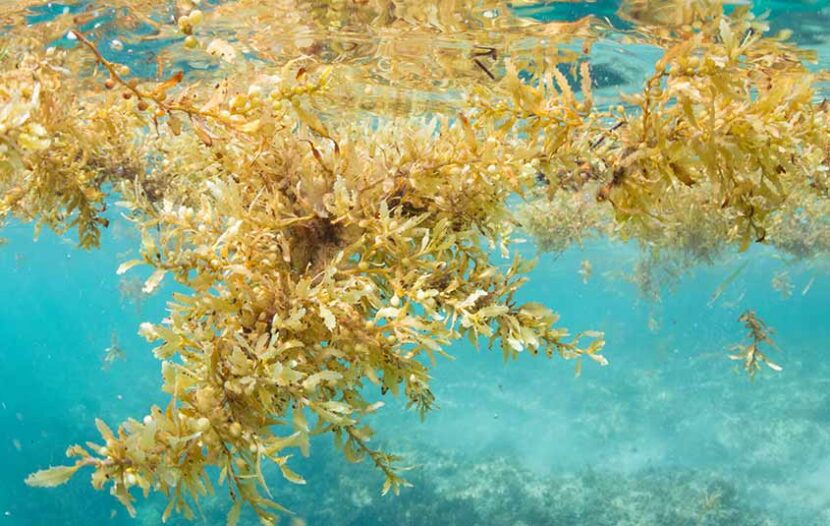MEXICO CITY (AP) — The head of Mexico’s Navy acknowledged Wednesday that the country’s Caribbean coast is facing an atypical problem with a kind of seaweed known as sargassum, and that Navy boats assigned to catch it before it drifts ashore are working poorly.
Navy Secretary Jose Ojeda said the boats sit low in the water with little freeboard — the space between the boats’ sides and the waterline — making them risky to operate when there are waves.
He acknowledged that almost all the sargassum — a brown algae — collected recently was shoveled off beaches, not caught at sea.
“We are definitely trying to prevent it from reaching the beaches, but sometimes it is complicated because of the tides or bad weather,” Ojeda said. “We cannot take the boats out, they have very little of what we call freeboard … and it is risky to take them out.”
The Navy currently has 11 sargassum-collecting boats operating in the area. But the Navy’s own figures show the portion they have been able to collect before it hits the beach has been falling.
In 2020, the Navy collected 4% of sargassum at sea, while 96% was raked off beaches. But that figure fell to 3% in 2021 and about 1% as of April 2022.
Ojeda said the amount collected at sea was about 4% in the last week of May.
Ojeda advocated installing more floating barriers, but acknowledged that even that approach faces problems.
The resort of Cancun has not been hit as hard this year as the Riviera Maya, just to the south. A carpet of sargassum extends from there almost all the way down to Tulum, further south.
On Friday, an independent monitoring network estimated that 45 of the 80 beaches monitored on the Caribbean coast had “excessive” or large amounts of sargassum. Only three beaches — including two on the island of Isla Mujeres — had none.
“Yes, there has been more than in past years, it has gotten beyond us,” Ojeda acknowledged. “We are aware that it is affecting tourism in some places, some beaches.”
The arrival of heaps of brown sargassum on the coast’s normally pristine white sand beaches comes just as tourism is recovering to pre-pandemic levels, though job recovery in the country’s top tourist destination has been slower.
With more algae spotted floating out at sea, experts fear that 2022 could be as bad or worse than the catastrophic year of 2018, the biggest sargassum wave to date.
Sargassum was not much of a problem on Mexico’s Caribbean coast before 2014. Initial reports in the 2010s suggested the masses of seaweed came from an area of the Atlantic off the northern coast of Brazil, near the mouth of the Amazon River. Increased nutrient flows from deforestation or fertilizer runoff could be feeding the algae bloom.
But other causes may contribute, like nutrient flows from the Congo River, increased upwelling of nutrient-laden deeper ocean water in the tropical Atlantic and dust blowing in from Africa.

